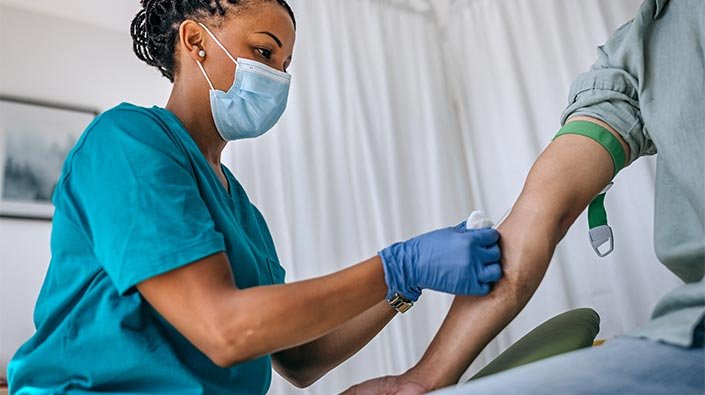Strategies for Ensuring Safety Standards in Blood Collection Equipment and Supplies in US Hospitals
Summary
- Hospitals in the United States are implementing various strategies to ensure compliance with the latest safety standards for blood collection equipment and supplies.
- These strategies include staff training and education, strict adherence to regulatory guidelines, regular monitoring and evaluation of equipment and supplies, and collaboration with manufacturers and suppliers.
- By following these strategies, hospitals can maintain a safe and efficient environment for blood collection procedures, ultimately promoting better patient outcomes.
Introduction
In hospitals across the United States, ensuring compliance with the latest safety standards for blood collection equipment and supplies is crucial. Blood collection procedures are a routine part of patient care, and it is important that hospitals have the necessary equipment and supplies to perform these procedures safely and effectively. In this article, we will explore the strategies that hospitals are implementing to meet these safety standards and ensure the well-being of both patients and Healthcare Providers.
Staff Training and Education
One of the key strategies that hospitals are implementing to ensure compliance with safety standards for blood collection equipment and supplies is staff training and education. Healthcare Providers who perform blood collection procedures must be properly trained on the use of equipment, handling of supplies, and adherence to safety protocols. By providing ongoing training and education to staff members, hospitals can ensure that all blood collection procedures are conducted in a safe and efficient manner.
Key Points:
- Training on the proper use of blood collection equipment, such as needles, syringes, and vacutainer tubes.
- Education on safety protocols, including techniques for preventing Needlestick Injuries and exposure to bloodborne pathogens.
- Regular updates on regulatory guidelines and best practices for blood collection procedures.
Adherence to Regulatory Guidelines
In addition to staff training and education, hospitals must also strictly adhere to regulatory guidelines set forth by agencies such as the Occupational Safety and Health Administration (OSHA) and the Centers for Disease Control and Prevention (CDC). These guidelines outline the specific safety standards that must be followed when performing blood collection procedures, including the use of personal protective equipment, Proper Disposal of contaminated materials, and protocols for handling potentially infectious blood samples.
Key Points:
- Regular audits and inspections to ensure compliance with regulatory guidelines.
- Documentation of safety protocols and procedures for blood collection activities.
- Training on OSHA and CDC requirements for bloodborne pathogens and infection control.
Monitoring and Evaluation of Equipment and Supplies
Another critical strategy that hospitals are implementing is the regular monitoring and evaluation of blood collection equipment and supplies. This includes conducting routine inspections of equipment to ensure proper functioning, checking expiration dates on supplies to avoid using outdated materials, and monitoring inventory levels to prevent shortages. By maintaining a comprehensive system for monitoring and evaluating equipment and supplies, hospitals can prevent potential safety hazards and ensure that blood collection procedures are performed accurately and efficiently.
Key Points:
- Creating a schedule for routine inspections and maintenance of blood collection equipment.
- Implementing a system for tracking expiration dates on supplies and reordering as needed.
- Conducting regular inventory audits to identify any shortages or Discrepancies in equipment and supplies.
Collaboration with Manufacturers and Suppliers
Lastly, hospitals are collaborating with manufacturers and suppliers of blood collection equipment and supplies to ensure compliance with safety standards. By working closely with these partners, hospitals can stay informed about the latest advancements in blood collection technology, receive training on new equipment, and address any issues or concerns related to the quality and safety of products. This collaboration helps hospitals maintain a reliable Supply Chain for blood collection materials and access the resources needed to uphold safety standards in their facilities.
Key Points:
- Engaging in ongoing communication with manufacturers and suppliers to stay updated on product specifications and safety features.
- Participating in product demonstrations and training sessions to familiarize staff with new equipment and supplies.
- Providing feedback to manufacturers and suppliers on the performance and usability of blood collection products.
Conclusion
In conclusion, hospitals in the United States are proactively implementing strategies to ensure compliance with safety standards for blood collection equipment and supplies. By prioritizing staff training and education, adhering to regulatory guidelines, monitoring equipment and supplies, and collaborating with manufacturers and suppliers, hospitals can create a safe and efficient environment for blood collection procedures. Ultimately, these efforts contribute to better patient outcomes and help Healthcare Providers deliver high-quality care while minimizing risks associated with blood collection activities.

Disclaimer: The content provided on this blog is for informational purposes only, reflecting the personal opinions and insights of the author(s) on the topics. The information provided should not be used for diagnosing or treating a health problem or disease, and those seeking personal medical advice should consult with a licensed physician. Always seek the advice of your doctor or other qualified health provider regarding a medical condition. Never disregard professional medical advice or delay in seeking it because of something you have read on this website. If you think you may have a medical emergency, call 911 or go to the nearest emergency room immediately. No physician-patient relationship is created by this web site or its use. No contributors to this web site make any representations, express or implied, with respect to the information provided herein or to its use. While we strive to share accurate and up-to-date information, we cannot guarantee the completeness, reliability, or accuracy of the content. The blog may also include links to external websites and resources for the convenience of our readers. Please note that linking to other sites does not imply endorsement of their content, practices, or services by us. Readers should use their discretion and judgment while exploring any external links and resources mentioned on this blog.
